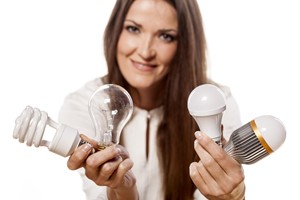Getting The Most Benefit and Value From Lighting
by The Betros Team 06/17/2018

Choosing the right lighting for your home not only enhances it visually, but can also make it a safer and more secure place to live.
While an interior decorator or electrician can offer you additional suggestions about upgrading your home's lighting efficiency and appearance, here are a few helpful lighting tips and ideas to consider.
- Dimmer switches can be a highly desirable feature to include in most rooms in your house. You only use them on an as-needed basis, and they're great for reducing eye strain, creating a more relaxing environment, and conserving electricity. Although dimmer switches are relatively easy to install, hiring a reasonably priced electrician is good insurance against getting an electrical shock or doing it incorrectly.
- Flood lights strategically placed in different areas of your property can help keep away trespassers, burglars, and vandals. Motion-activated security lights are especially effective at deterring crime and sending intruders on their way. While lighting alone does not comprise a fail-proof home security system, it is one of several methods that, when used together, can keep your home, property, and family safe.
- Adequate outside lighting helps prevent family members and visitors from falling, tripping, and getting injured on your property when approaching your home at night. This is especially important for those who are elderly or vision impaired.
- Outdoor lighting can also be effectively used for decorative purposes on porches, patios, backyard decks, and walkways.
Light Bulb Facts
If you're wondering why old-fashioned incandescent light bulbs are becoming harder to find on store shelves, it's because of two things:
- The Energy Independence and Security Act of 2007: It was enacted to for several reasons, including eliminating wasteful energy products from the market, helping the United States become more energy independent, and reducing harmful emissions from coal-fired power plants. Although some consumers prefer the old-fashioned incandescent light bulb, it's interesting to know that they're only 10% efficient. What that means, says the EPA, is that 90% of the electricity it uses is lost to heat.
- Consumers want to save money on energy consumption. Here's what the EPA says on the subject: "Because lighting accounts for approximately 12% of the average household’s energy bill, more efficient options will help consumers save money on their utility bills."
Those more efficient options include compact fluorescent lights (CFL), light emitting diode bulbs (LED), and halogen bulbs. Although energy efficient lights can be somewhat more expensive initially, they last longer and typically use about 25%-80% less energy than traditional incandescent light bulbs. That's the word from the U.S. Department of Energy's Office of Energy Efficiency and Renewable Energy. Based on figures from the EPA, consumers can also save money by using Energy Star-qualified LED bulbs, which use at least 75 percent less energy and last 15 times longer than incandescent bulbs.
With its economical features and versatile uses in and around the house, there are a lot of benefits to be had from choosing the right lighting.
